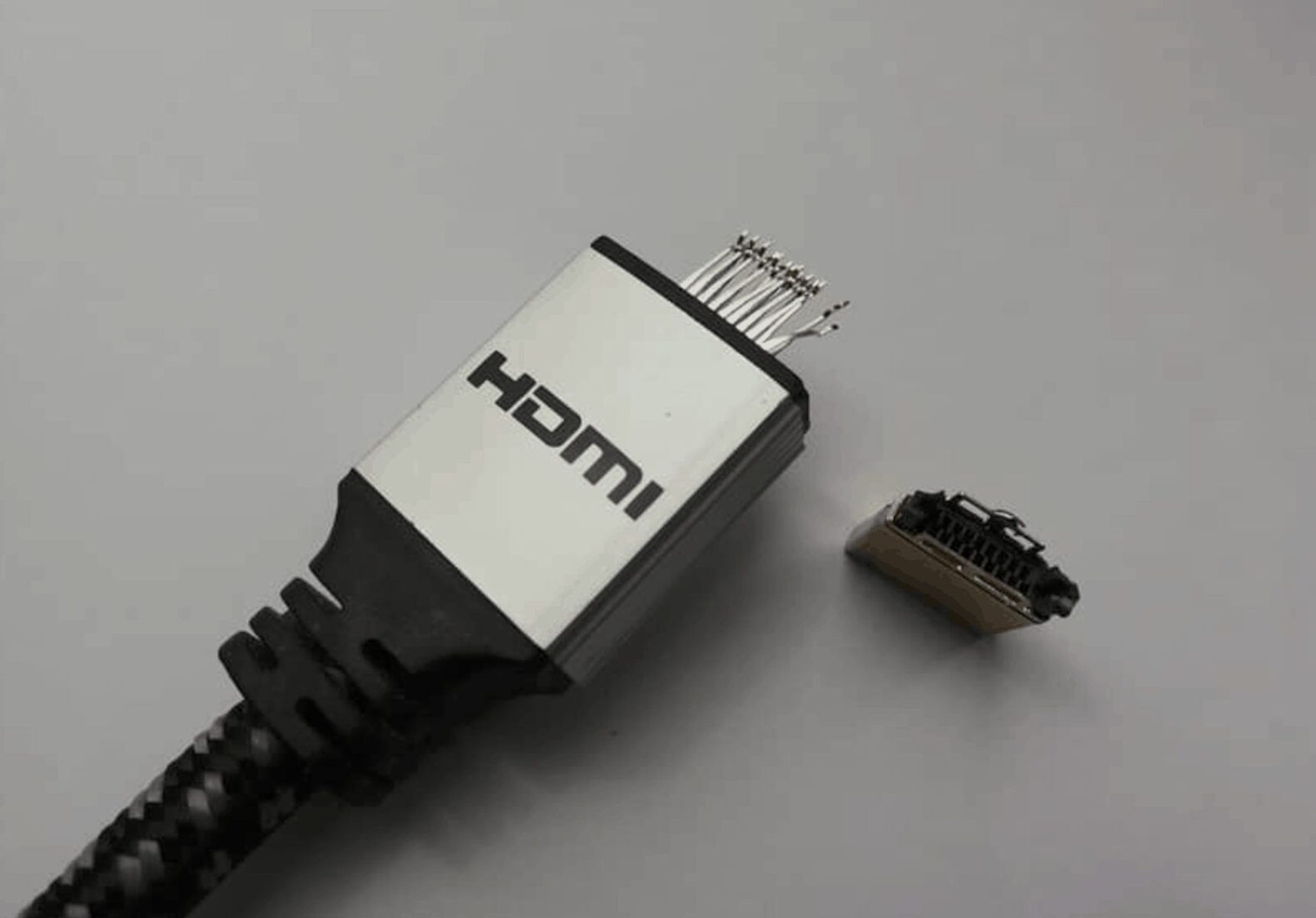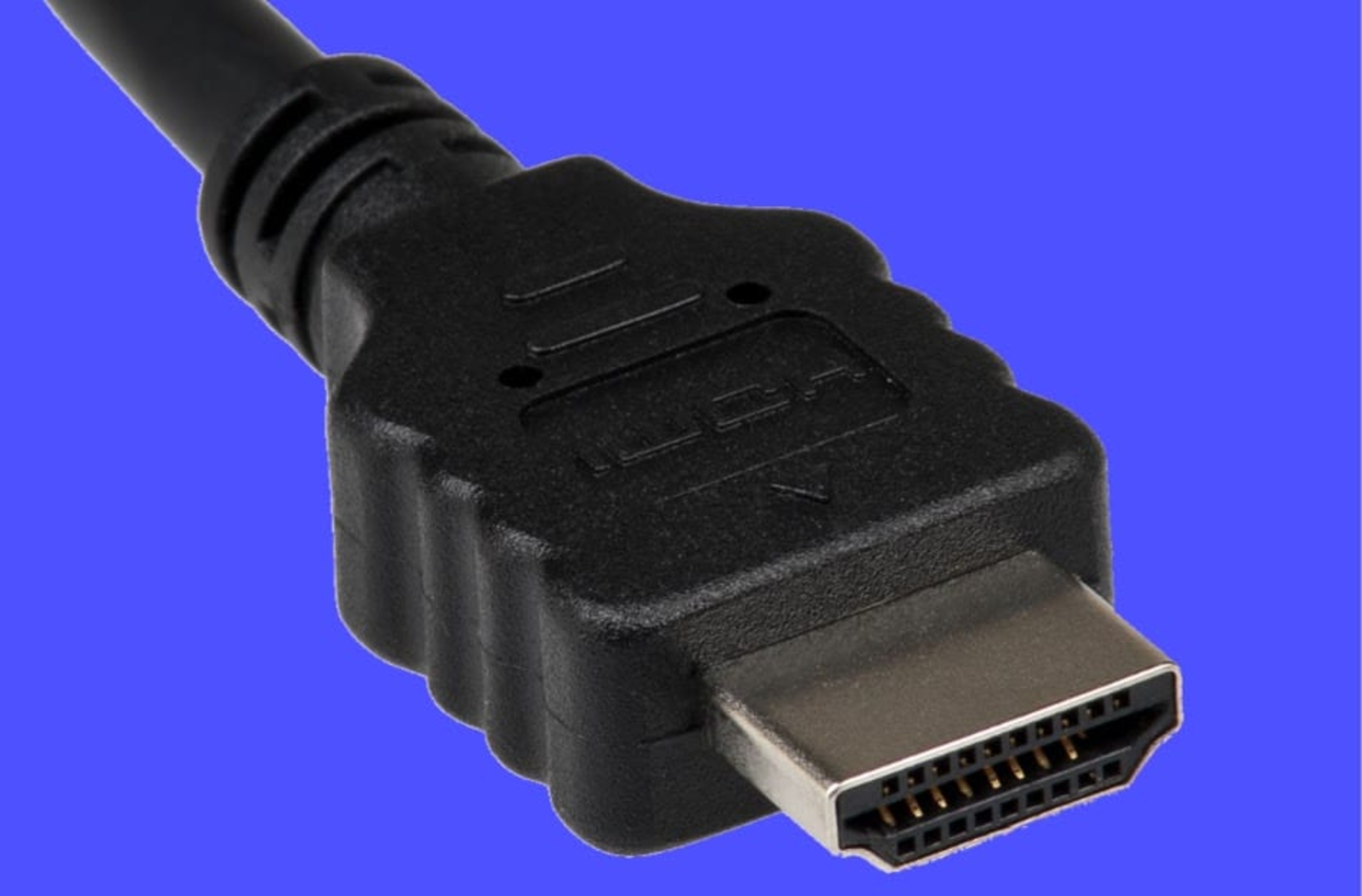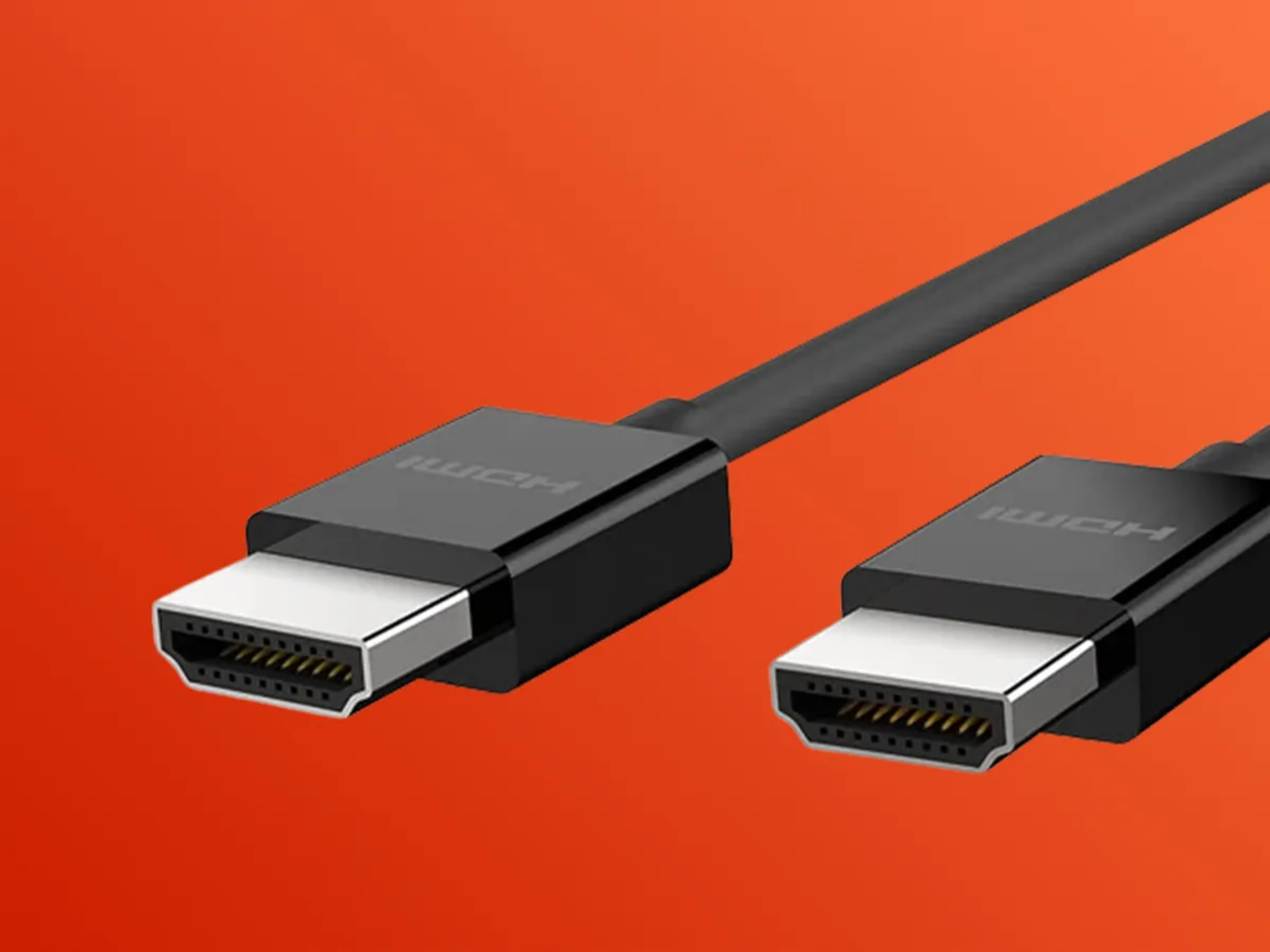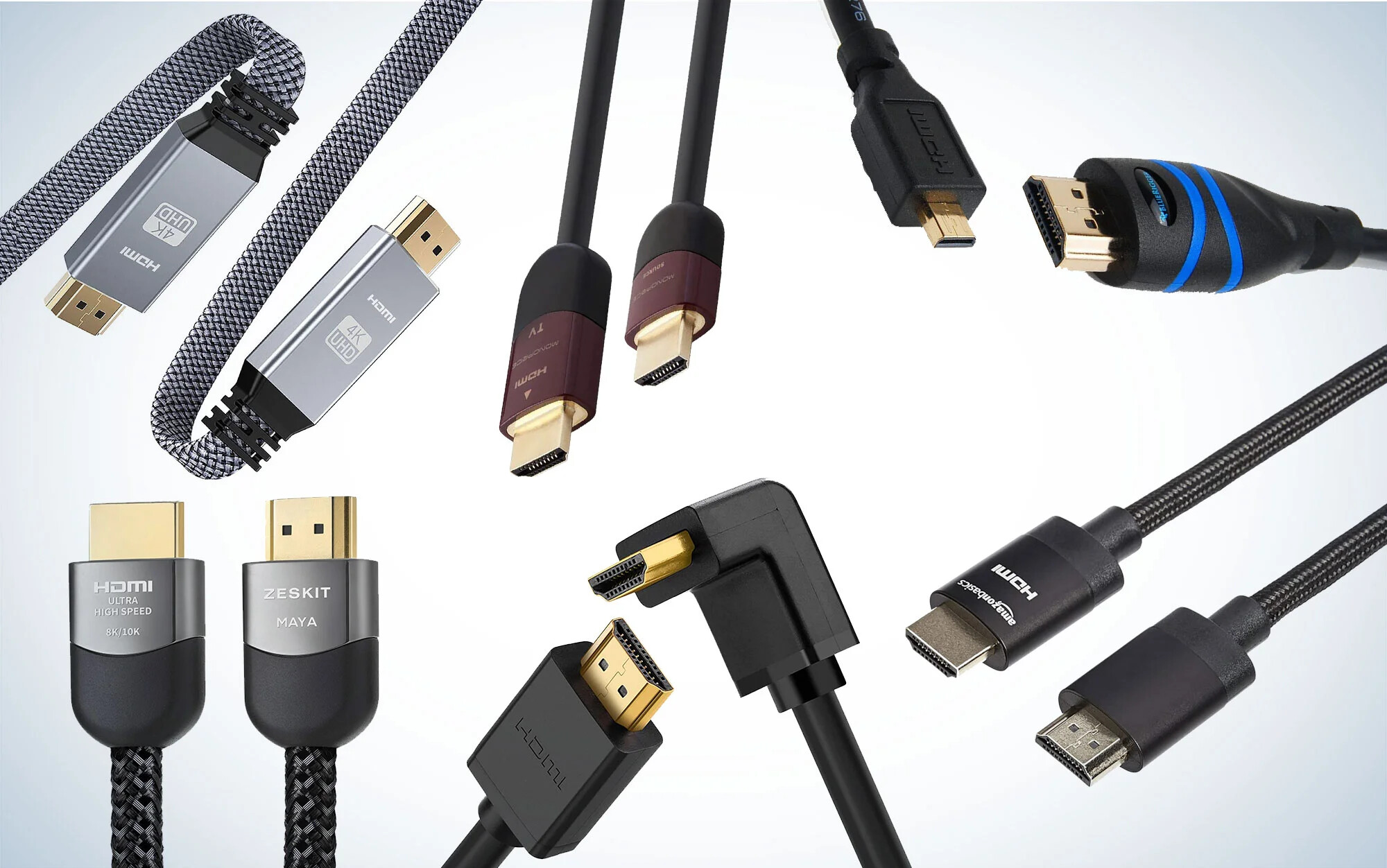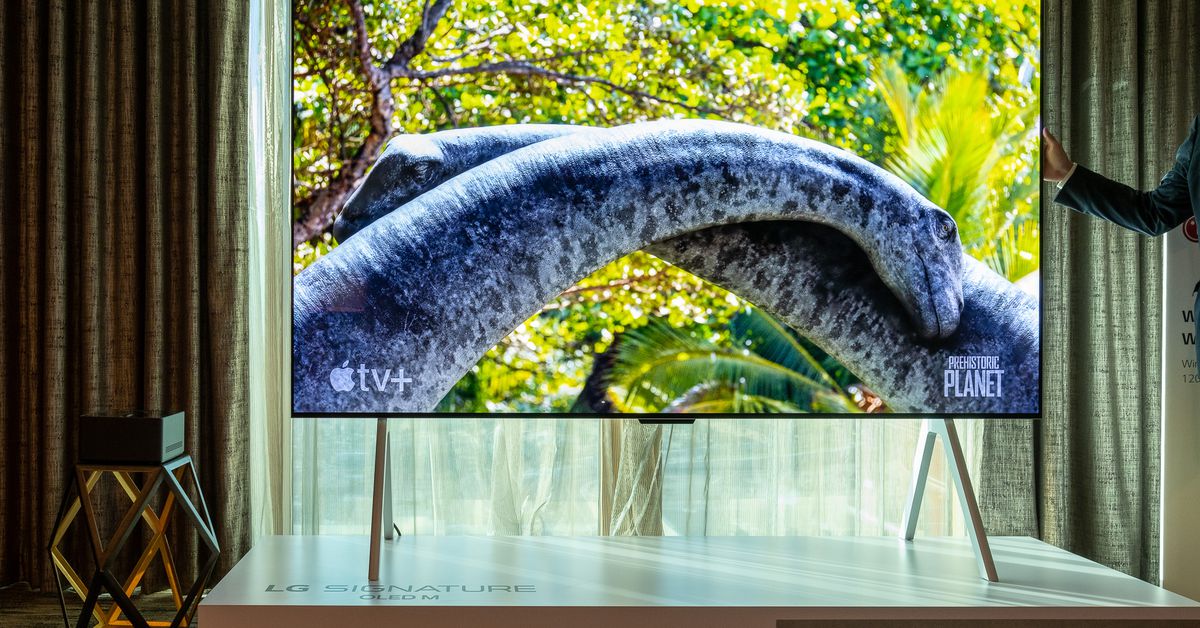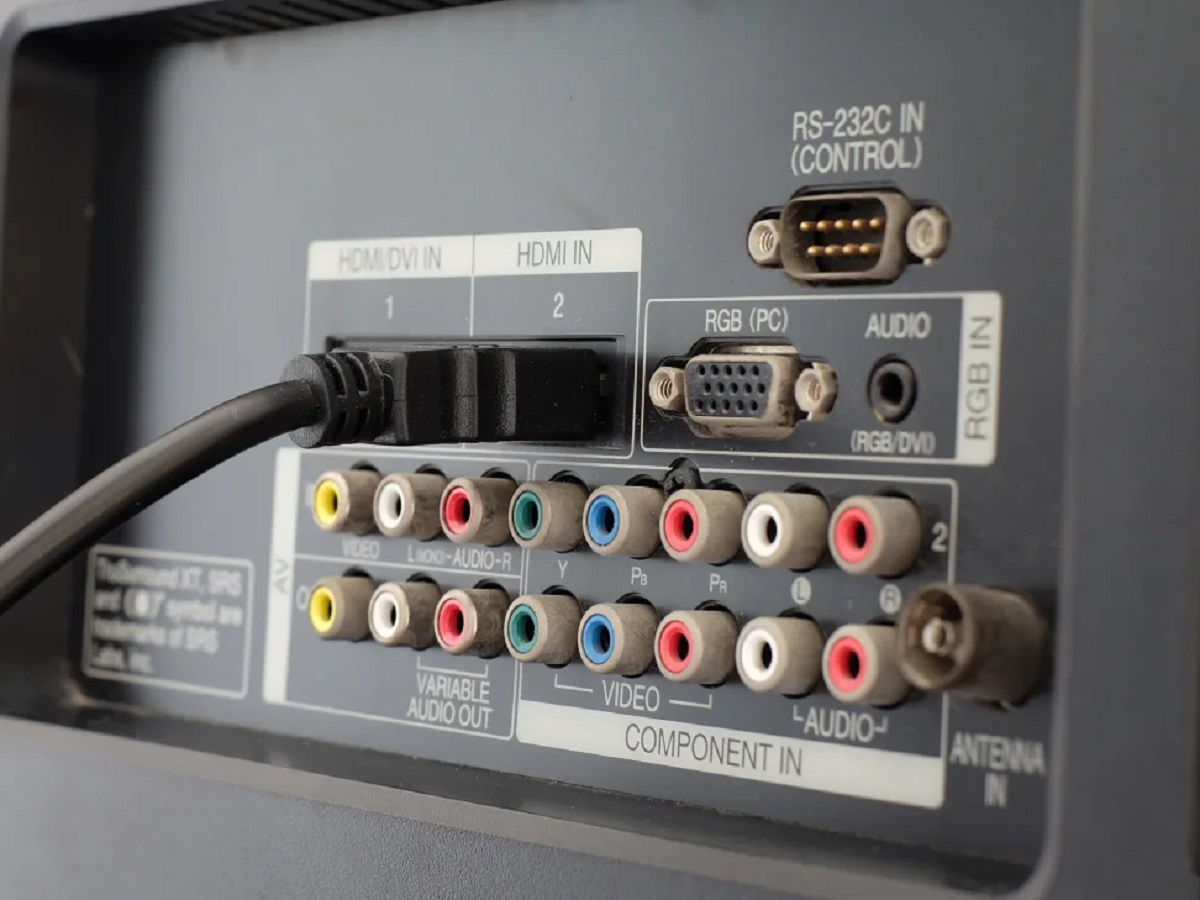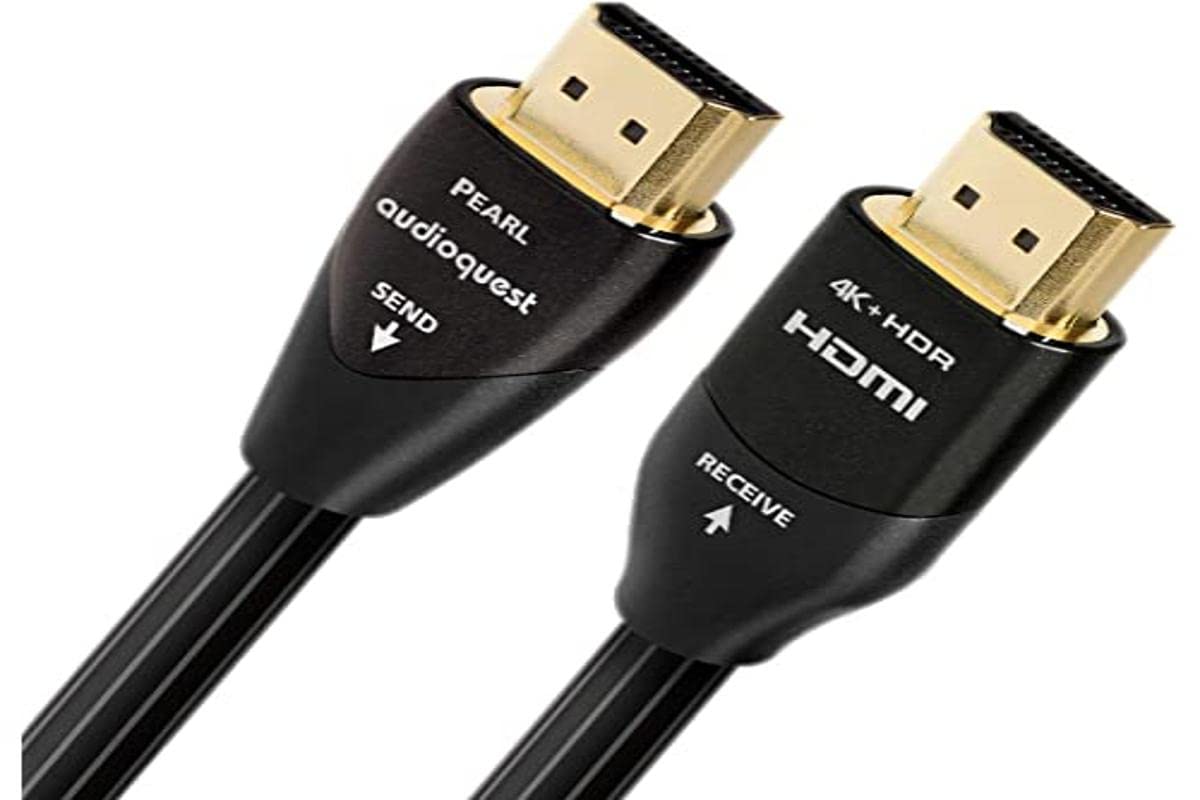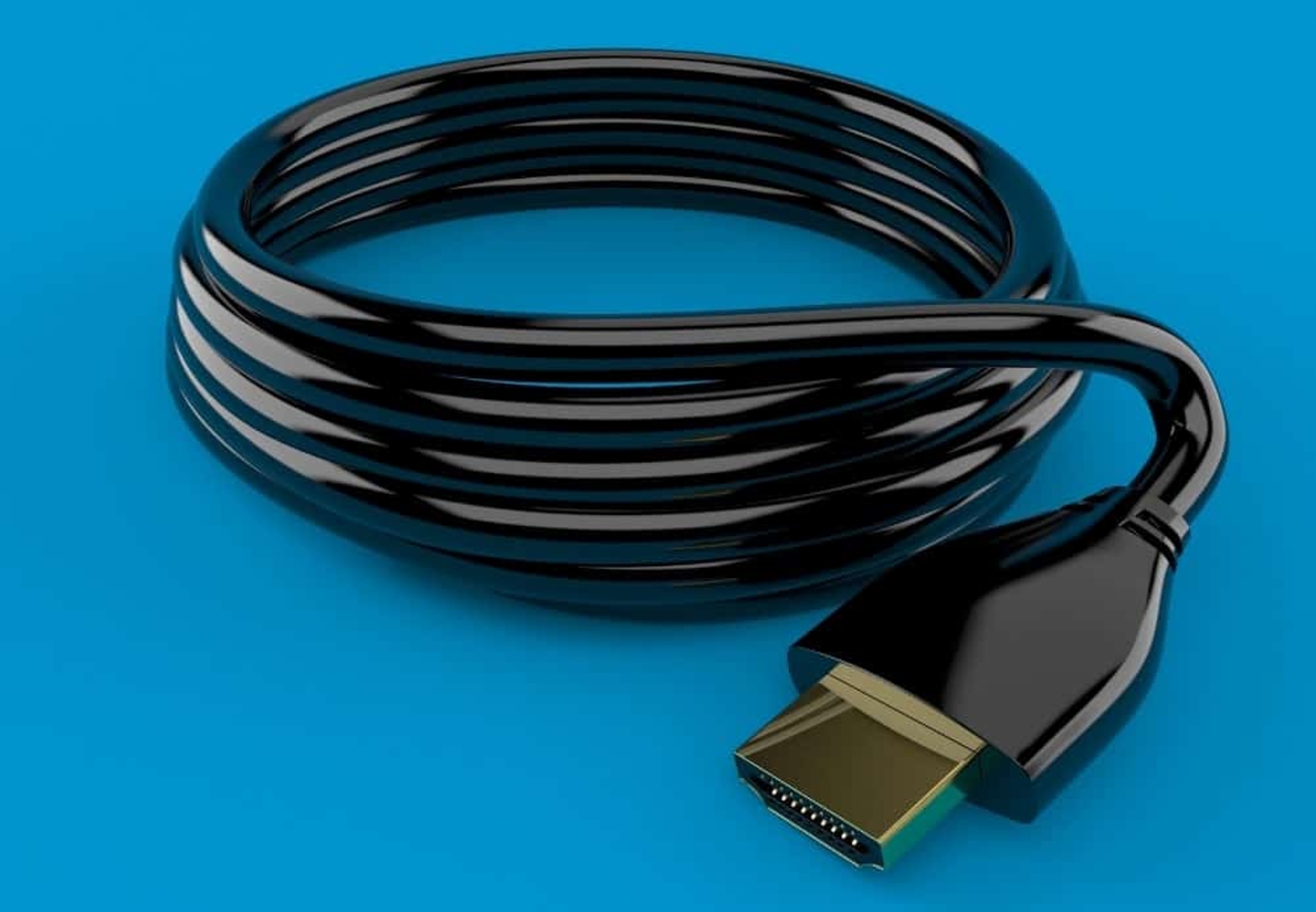Introduction
HDMI (High-Definition Multimedia Interface) cables have become an essential part of our modern digital lives. These cables allow us to connect various devices, such as laptops, gaming consoles, and media players, to high-definition displays, such as TVs and monitors. While HDMI cables are crucial for transmitting audio and video signals, you may have noticed that their prices can vary significantly. This begs the question: Why are HDMI cables so expensive?
To understand why HDMI cables come with hefty price tags, we must first examine their composition and the technology involved. HDMI cables are built to deliver high-quality audio and video signals, ensuring a crisp and uninterrupted digital experience. They consist of multiple wires and connectors, each specifically designed to transmit different types of data. The manufacturing process for these cables requires precision and high-quality materials to maintain signal integrity and prevent interference.
Another factor contributing to the expense of HDMI cables is the level of competition within the market. With various brands and manufacturers offering HDMI cables, each vying for a share of the market, pricing strategies can become a delicate balancing act. Established brands often invest heavily in marketing and brand recognition, which can drive up the cost of their products.
Furthermore, the pricing of HDMI cables is not solely determined by manufacturing and brand factors. Retailers also play a significant role in setting the prices of these cables. The pricing strategies of retailers can vary, with some opting for higher price points to create an illusion of exclusivity, while others may competitively price their cables to attract customers.
It’s important to address the misconceptions that surround HDMI cables and their performance. Some people believe that expensive HDMI cables are necessary to achieve the best audio and video quality. However, this is not always the case. HDMI cables are designed to meet specific technical standards, and as long as the cable meets those standards, the performance should be similar regardless of the price. It’s worth noting that HDMI cables labeled as “high-speed” or “premium” may offer additional features, such as higher bandwidth or support for advanced audio formats, which may justify a higher price.
So, are expensive HDMI cables worth it? In the following sections, we will dive deeper into the factors that contribute to the cost of HDMI cables, the role of marketing and advertising, and ultimately help you make an informed decision about your purchasing choices.
Defining HDMI Cables
HDMI (High-Definition Multimedia Interface) cables are the digital connection standard for transmitting high-quality audio and video signals between electronic devices and high-definition displays. These cables have become essential for connecting devices such as Blu-ray players, gaming consoles, laptops, and media players to TVs, monitors, projectors, and audio systems.
HDMI cables are designed to carry digital signals and support various audio and video formats, including high-definition resolutions, multi-channel audio, and 3D content. They provide a convenient and reliable solution for transmitting high-quality digital content without loss of signal quality.
One of the key features of HDMI cables is their ability to transmit both audio and video signals through a single cable. This eliminates the need for multiple cables, simplifying the setup process and reducing cable clutter. HDMI cables also support advanced features such as CEC (Consumer Electronics Control), which allows interconnected devices to control each other through a single remote control.
There are different types of HDMI cables available in the market, categorized by their supported features and specifications. Standard HDMI cables are the most common and can support resolutions up to 1080i or 720p. High-Speed HDMI cables are designed to handle higher resolutions, such as 4K Ultra HD, and can also support additional features like Ethernet connectivity and 3D content. Premium High-Speed HDMI cables offer the same features as High-Speed cables but often come with enhanced build quality and may provide better performance in terms of signal integrity.
To ensure compatibility and reliable performance, HDMI cables adhere to strict standards set by HDMI Licensing, LLC, the organization responsible for licensing the HDMI technology. These standards ensure that HDMI cables meet specific requirements for signal integrity, bandwidth capacity, and other technical specifications.
There are various connector types used in HDMI cables, including Type A (standard HDMI), Type C (mini HDMI), and Type D (micro HDMI), allowing for compatibility with different devices and connection points. These connectors are designed to securely connect to HDMI ports and ensure a reliable signal transmission.
Overall, HDMI cables are an integral part of our digital ecosystem, allowing us to enjoy high-definition audio and video content across a wide range of devices. Understanding the features and specifications of HDMI cables can help you select the appropriate cable for your specific needs and ensure optimal performance in your audio-visual setup.
The Importance of High-Quality HDMI Cables
When it comes to connecting our electronic devices to high-definition displays, using high-quality HDMI (High-Definition Multimedia Interface) cables is crucial. The quality of the HDMI cable can have a significant impact on the audio and video signals being transmitted, as well as the overall performance of our digital setup.
One of the primary reasons for using high-quality HDMI cables is to ensure a reliable and stable signal transmission. Cheap or low-quality cables may not provide adequate shielding, resulting in electromagnetic interference (EMI) or radio frequency interference (RFI) that can degrade the signal quality. This interference can manifest as degraded video resolution, audio dropouts, or distorted colors. High-quality HDMI cables are designed with robust shielding materials that effectively minimize or eliminate these unwanted interferences, ensuring a clean and pure signal transfer.
In addition to signal integrity, high-quality HDMI cables offer wider bandwidth capabilities. Bandwidth refers to the amount of data that can be transmitted per second. With the rise of high-resolution content, such as 4K Ultra HD and HDR (High Dynamic Range), the demand for greater bandwidth has increased. Low-quality cables may not be able to handle the higher bandwidth requirements, resulting in image artifacts, signal degradation, or even complete signal loss. High-quality HDMI cables, especially those labeled as “high-speed,” are designed to support the increased bandwidth necessary for delivering these high-resolution and data-intensive formats.
Another aspect to consider is the durability and longevity of high-quality HDMI cables. Well-made cables are constructed with superior materials and rigorous manufacturing standards, making them more resistant to wear and tear. They are less likely to suffer from cable fraying, connector damage, or loose connections, which can often occur with cheaper alternatives. By investing in high-quality HDMI cables, you can enjoy a longer lifespan and avoid the inconvenience and cost of constantly replacing faulty cables.
Furthermore, high-quality HDMI cables often come with additional features and certifications that enhance user experience. For example, some higher-end cables may include support for advanced audio formats like Dolby Atmos or DTS:X, allowing you to enjoy immersive 3D audio. They may also offer features like Ethernet connectivity, which enables network sharing between HDMI-connected devices. These added features can provide a more versatile and future-proof solution for your audio and video needs.
To summarize, using high-quality HDMI cables is essential for maintaining a high level of audio and video performance. They ensure reliable signal transmission, minimize interference, provide sufficient bandwidth for high-resolution content, and offer greater durability and additional features. While the initial investment may be higher, the long-term benefits and improved user experience make high-quality HDMI cables a worthwhile choice for any digital setup.
Manufacturing Costs and Complexity
The manufacturing of HDMI (High-Definition Multimedia Interface) cables involves a combination of complex processes and the use of high-quality materials, which contribute to their overall cost. Understanding the manufacturing costs and complexity can shed light on why HDMI cables are often priced higher than other types of cables.
Firstly, the construction of HDMI cables requires the use of multiple wires and connectors to transmit audio and video signals. These cables consist of numerous conductive wires, each responsible for carrying specific data signals, such as audio, video, and control signals. The intricate manufacturing process involves precise assembly and soldering of these wires to the connectors, ensuring optimal signal transfer and minimizing signal loss.
In order to maintain signal integrity and prevent interference, high-quality HDMI cables utilize shielding materials. These shields protect the wires from external electromagnetic interference (EMI) or radio frequency interference (RFI) that can degrade the signal quality. The shielding process adds an additional layer of complexity to the manufacturing process, as it requires precise placement and grounding of the shields to maximize effectiveness.
Another factor contributing to the manufacturing costs is the use of high-quality materials. HDMI cables often incorporate copper conductors, which provide excellent conductivity for transmitting audio and video signals. Higher-grade copper can be more expensive, but it offers better signal transmission properties, reducing signal loss and ensuring a consistent and reliable connection.
In addition to copper conductors, HDMI cables may also incorporate other materials and components that enhance their performance. This can include insulation materials to prevent signal crosstalk and maintain proper impedance levels throughout the cable’s length. Gold-plated connectors may also be used, as they offer improved conductivity, corrosion resistance, and better signal transmission. These premium materials increase the manufacturing costs but contribute to the overall quality of the HDMI cables.
The manufacturing complexity of HDMI cables also extends to the testing and certification process. HDMI cables must undergo rigorous testing to ensure they meet specific technical standards set by HDMI Licensing, LLC. This includes testing for proper signal transmission, bandwidth capabilities, and compliance with HDMI specifications. The certification process guarantees that the cable meets the required performance standards, adding to the overall manufacturing costs.
In summary, the manufacturing costs of HDMI cables are higher due to the complex processes involved, the use of high-quality materials, and the stringent testing and certification requirements. The integration of multiple wires, precise assembly, shielding, and the incorporation of superior materials contribute to the overall quality and performance of HDMI cables. While these factors drive up the cost, they also ensure a reliable and high-quality audio and video experience for consumers.
Market Competition and Branding
The market for HDMI (High-Definition Multimedia Interface) cables is highly competitive, with numerous brands and manufacturers vying for consumer attention. This competitive landscape, coupled with branding strategies, plays a significant role in the pricing of HDMI cables.
Well-established brands often invest heavily in marketing and branding efforts to build a strong reputation and gain consumer trust. These brands may have a long history of producing high-quality audio and video equipment or other electronic products, giving consumers confidence in their HDMI cables. The brand recognition and reputation can justify higher price points, as consumers are willing to pay a premium for products associated with a trusted brand.
Branding also extends to the packaging and presentation of HDMI cables. Some brands opt for premium packaging, using high-quality materials and sleek design, to create an impression of luxury and exclusivity. These packaging choices can contribute to the perception of higher value and justify higher price tags. Retailers also play a role in branding by featuring certain brands prominently or associating them with quality and innovation.
In addition to branding, market competition among HDMI cable manufacturers can influence pricing strategies. With multiple brands offering similar products, each brand must find a way to differentiate themselves and position their cables in the market. This can result in a wide range of price points, with some brands competing on price by offering more affordable options, while others focus on premium quality and higher price tags.
Manufacturers relying on advanced technologies, specialized materials, and innovative features may charge higher prices for their HDMI cables to reflect the added value they bring. These premium cables may offer higher bandwidth capabilities, more durable construction, or additional features like 3D support or Ethernet connectivity. By positioning their cables as high-end products, these manufacturers target consumers seeking the best possible audio and video performance.
On the other hand, some manufacturers choose to produce more affordable HDMI cables, targeting budget-conscious consumers or those who do not require advanced features. These cables may still meet the required industry standards but may lack the premium materials or added features found in higher-priced options. By offering more affordable options, these manufacturers aim to capture a larger market share and compete in the entry-level segment.
Overall, market competition and branding play vital roles in determining the pricing of HDMI cables. Brand reputation, marketing efforts, packaging choices, and the differentiation strategies of manufacturers all contribute to the perceived value and pricing of HDMI cables. Whether consumers prioritize brand recognition, advanced features, or budget-friendly options, the competitive market ensures a range of choices and price points to cater to different preferences and needs.
Pricing Strategies of Retailers
When it comes to HDMI (High-Definition Multimedia Interface) cables, the pricing strategies of retailers can have a significant impact on the overall cost and perceived value. Retailers have the flexibility to set their own prices, and their pricing strategies can vary depending on various factors.
One common pricing strategy employed by retailers is to set higher price points for HDMI cables to create an illusion of exclusivity and premium quality. By pricing cables at a higher level, some retailers aim to convey that their products are of superior quality or offer better performance. This pricing strategy appeals to consumers who may equate higher prices with better products. However, it is important for consumers to evaluate the actual specifications and features of the cables rather than relying solely on price.
On the other hand, some retailers may opt for competitive pricing to attract customers and gain a competitive edge in the market. By offering HDMI cables at lower prices compared to their competitors, these retailers aim to capture a larger market share and potentially upsell other products. This strategy benefits consumers who are price-sensitive and looking for affordable options without compromising on necessary specifications and quality.
Some retailers may also use dynamic pricing strategies for HDMI cables. Dynamic pricing involves adjusting prices based on factors such as supply and demand, competitor pricing, or specific promotions. For example, during sales or promotional events, retailers may offer discounts or bundle deals with other electronic products to incentivize customers to purchase their HDMI cables. These temporary price adjustments can provide cost savings for consumers but may require careful monitoring to ensure the discounts are genuine and not a result of artificially inflated original prices.
Brick-and-mortar retailers may face additional operating costs such as rent, utilities, and staffing, which can influence their pricing decisions. These retailers may include these overhead costs in their pricing structure, resulting in slightly higher prices compared to online retailers who have lower operational expenses. However, it is important for consumers to consider other factors such as convenience, customer support, and return policies when choosing a purchasing channel for HDMI cables.
Online retailers often have a more competitive advantage in pricing due to lower overhead and operational costs. They can offer HDMI cables at lower price points compared to traditional brick-and-mortar retailers. Online retailers also have the advantage of often featuring customer reviews and ratings, allowing potential buyers to make more informed purchasing decisions based on the experiences of previous customers.
It’s worth noting that pricing strategies can vary significantly among retailers, and it’s recommended for consumers to compare prices, read customer reviews, and evaluate the reputation and reliability of the retailer before making a purchase. By doing so, consumers can find HDMI cables that meet their needs at a fair and reasonable price, regardless of the pricing strategy employed by the retailer.
The Role of Marketing and Advertising
Marketing and advertising play a crucial role in the promotion and perception of HDMI (High-Definition Multimedia Interface) cables. Manufacturers and retailers utilize various marketing strategies to raise awareness, build brand reputation, and influence consumer purchasing decisions.
One of the primary objectives of marketing and advertising is to create a demand for HDMI cables and position them as essential accessories for any audio and video setup. Through targeted marketing campaigns, manufacturers aim to educate consumers about the benefits and features of HDMI cables, highlighting how they enhance their digital experience. This can be done through informative content, demonstrations, and comparisons that emphasize the advantages of using HDMI cables over alternative connection options.
Another aspect of marketing and advertising for HDMI cables is the establishment of brand recognition and trust. Manufacturers invest in branding efforts to differentiate their cables in a competitive market. They strive to create a recognizable brand identity and associate their cables with reliability, quality, and innovation. This can be achieved through consistent messaging, visually appealing packaging, and endorsement from industry experts or influencers, fostering a positive perception among consumers.
Marketing and advertising also play a role in communicating the unique selling propositions of HDMI cables. Manufacturers highlight features such as high-resolution support, advanced audio capabilities, compatibility with different devices, and durability. By emphasizing these features, they aim to persuade consumers to choose their HDMI cables over alternatives by showcasing how their cables can enhance the audio and video quality of their digital content.
Online advertising, including search engine advertising and social media campaigns, also plays a significant role in promoting HDMI cables. With the increasing popularity of online shopping, manufacturers and retailers target consumers who are actively searching for audio and video equipment by placing ads on relevant platforms. These ads can direct potential buyers to product listings, reviews, and demonstrations, helping them make informed purchasing decisions.
Customer reviews and testimonials also contribute to the marketing and advertising efforts for HDMI cables. Positive reviews and high ratings can enhance consumer trust and influence purchasing decisions. Manufacturers and retailers often leverage these reviews by featuring them on their websites and in marketing materials, reaffirming the quality and value of their products.
Additionally, marketing and advertising can influence pricing perceptions. Depending on the messaging and branding strategies employed, consumers may be more willing to pay a higher price for HDMI cables if they believe the cables offer superior quality, advanced features, or are associated with a reputable brand. Effective marketing and advertising campaign can help justify higher price points by creating a perception of value for consumers.
In summary, marketing and advertising play a vital role in raising awareness, shaping brand perception, and influencing consumer purchasing decisions for HDMI cables. Manufacturers and retailers utilize various marketing strategies to educate consumers about the benefits of HDMI cables, establish brand recognition, highlight unique features, and ultimately persuade consumers to choose their products over alternatives. By effectively communicating the value and advantages of HDMI cables, marketing and advertising efforts contribute to the overall success and growth of the HDMI cable market.
Misconceptions about HDMI Cables and Performance
There are several misconceptions surrounding HDMI (High-Definition Multimedia Interface) cables and their impact on audio and video performance. These misconceptions can lead to confusion and unnecessary expenditures. Understanding the truth behind these misconceptions can help consumers make informed decisions when purchasing HDMI cables.
One common misconception is that expensive HDMI cables always provide better audio and video quality. While it is true that HDMI cables must meet specific technical standards to ensure reliable signal transmission, the performance does not necessarily scale with the price. HDMI cables labeled as “high-speed” or “premium” may include additional features or support for higher bandwidth, but in terms of basic audio and video transmission, lower-priced HDMI cables that meet the necessary standards can perform just as well.
Another misconception is that longer HDMI cables will result in a loss of signal quality. While it is true that longer cables can introduce a small amount of signal degradation, this is generally negligible within the typical lengths of HDMI cables used in home theater setups. HDMI cables are designed to maintain signal integrity even over longer distances. If the cable meets the required specifications and is properly installed, the signal loss will be minimal and not noticeable in typical audio and video applications.
Some consumers believe that HDMI cables with gold-plated connectors offer superior performance. While gold plating provides better resistance against corrosion, it does not directly impact the signal quality or performance of HDMI cables. The main concern with connector quality is the physical durability and the ability to maintain a proper connection. As long as the connectors are well-made and provide a secure fit, the performance of the HDMI cable should not be affected by the type of plating used.
It is also a misconception that HDMI cables need to be replaced frequently. HDMI cables, like any other cables, are built to endure normal wear and tear. As long as the cable is in good condition, there is no need to replace it unless there is a specific requirement for an upgraded feature, such as higher bandwidth for 4K or HDR content. HDMI cables can last for many years, and unless there are visible signs of damage or degradation, there is no need for frequent replacements.
Lastly, some consumers believe that HDMI cables significantly improve picture quality and make a dramatic difference in audio performance. While HDMI cables play a role in transmitting audio and video signals, their impact on picture and sound quality is primarily determined by the capabilities of the connected devices, such as the source device and the display. The HDMI cable is essentially a conduit for signal transmission, and as long as it meets the necessary technical specifications, its contribution to overall performance is minimal compared to the capabilities of the devices themselves.
By dispelling these misconceptions, consumers can make more informed decisions when purchasing HDMI cables. It’s important to focus on the specific technical requirements, such as the necessary bandwidth and compliance with HDMI standards, rather than getting caught up in myths and misconceptions. Evaluating the actual needs and requirements of your audio-visual setup can help you select the appropriate HDMI cable without overspending on unnecessary features or falling prey to misleading claims.
Are Expensive HDMI Cables Worth It?
One of the questions that often arises when considering HDMI (High-Definition Multimedia Interface) cables is whether expensive cables are worth the price. While there is a wide range of HDMI cables available, with varying price points, it’s important to evaluate the factors that contribute to the cost and determine if the higher price justifies the investment.
As discussed earlier, HDMI cables transmit audio and video signals, and as long as the cable meets the necessary technical standards, the performance should be similar regardless of the price. HDMI cables are designed to carry digital signals, and as long as the cable is well-built and properly installed, it will transmit the signals without degradation or loss. The key is to ensure that the cable meets the required specifications for the resolution and features you require.
However, it’s worth noting that certain premium features and specifications may justify the higher price of certain HDMI cables. For example, if you require support for higher resolutions like 4K Ultra HD or HDR (High Dynamic Range), you may need HDMI cables that have the necessary bandwidth capabilities to handle these formats. In this case, higher-priced HDMI cables labeled as “high-speed” or “premium” may offer the necessary bandwidth and enhanced features to support these requirements.
Another consideration is the build quality and durability of HDMI cables. Cheaper cables may be more susceptible to wear and tear, leading to frayed cables, loose connections, and potential signal issues. Higher-priced HDMI cables are often constructed with better materials and undergo more rigorous testing to ensure better durability. If you anticipate frequent use or have a complex setup, investing in a more durable HDMI cable may be a sensible choice to prevent future issues and replacements.
Brand reputation and customer support can also play a role in the decision-making process. Well-established brands often offer better customer service, warranties, and after-sales support. This can be an important factor to consider, especially if you value peace of mind and the assurance of prompt assistance in case of any issues with your HDMI cables.
Ultimately, the decision to invest in expensive HDMI cables depends on your specific needs and preferences. If you require advanced features, such as higher bandwidth or support for specific audio formats, and you are confident in the reputation and quality of the brand, investing in a more expensive HDMI cable may provide the desired features and peace of mind.
However, if you have basic requirements and the cheaper HDMI cables meet the necessary technical specifications, there is no significant advantage in opting for more expensive options. It’s crucial to evaluate your needs, conduct research, and make a decision based on actual requirements rather than falling for unnecessary marketing claims or myths.
Remember, the most important factor is to ensure that the HDMI cable meets the required specifications for your audio and video setup. The price alone should not be the determining factor, but rather the quality, durability, and features that align with your specific needs.
Conclusion
HDMI (High-Definition Multimedia Interface) cables are an integral part of our digital lives, allowing us to connect various devices to high-definition displays. The price of HDMI cables can vary significantly, leading to questions about their value and whether expensive cables are worth the investment.
Throughout this exploration of HDMI cables, we have addressed common misconceptions, delved into the manufacturing costs, and examined the role of market competition, branding, pricing strategies, and the influence of marketing and advertising. We have also discussed the importance of high-quality cables and the factors to consider when evaluating their worth.
It is important to note that the performance of HDMI cables is primarily determined by their adherence to technical standards rather than the price tag. While expensive cables may offer additional features and better durability, cheaper cables that meet the necessary specifications can provide similar performance. It’s crucial to consider your specific needs and the requirements of your audio and video setup when selecting an HDMI cable.
Additionally, factors such as brand reputation, customer support, and warranty may influence the decision to invest in more expensive HDMI cables. If you need advanced features, such as higher bandwidth or specific audio support, and have confidence in the reputation of the brand, a higher-priced cable may be worth considering.
However, if your requirements are basic and the cheaper HDMI cables meet the necessary technical standards, there is no significant advantage in opting for more expensive options. It is important to evaluate your needs and conduct thorough research to make an informed decision.
In conclusion, when purchasing HDMI cables, it is essential to focus on the specific technical requirements and evaluate factors such as build quality, durability, and additional features that align with your specific needs. By dispelling misconceptions, conducting research, and making informed decisions, you can find an HDMI cable that offers optimal performance without overspending. Regardless of the price, the primary goal is to ensure that the cable meets the necessary technical standards and provides a reliable and high-quality audio and video experience.







